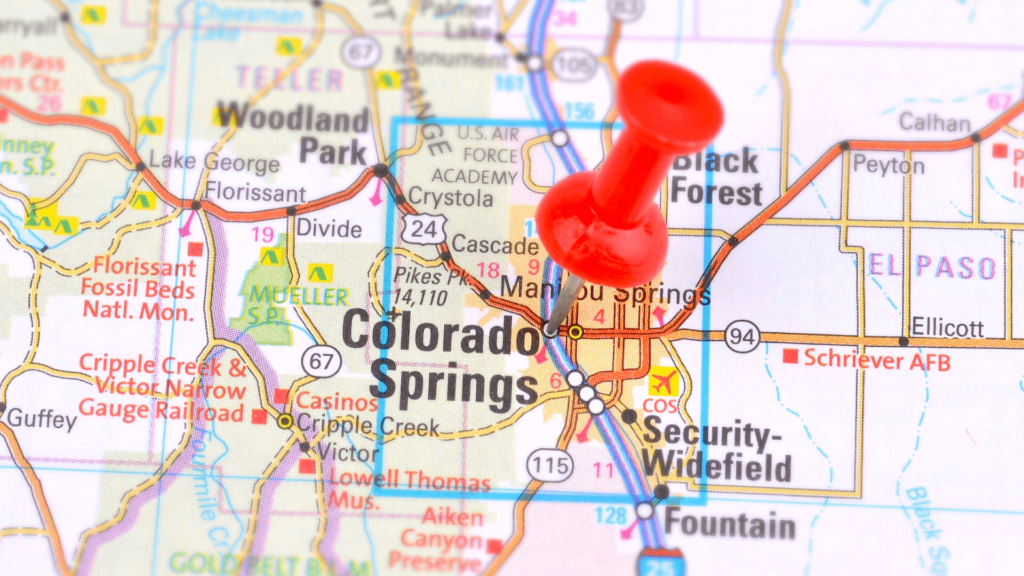Hazard Ahead! Colorado Springs Winter Construction Zones

Colorado Springs, known for its breathtaking beauty, boasts stunning landscapes that leave residents and visitors in awe. However, as the seasons change, so do the challenges that the city’s roads present, particularly in construction zones. Data from the Colorado Department of Transportation (CDOT) shows that, in 2019 (the most recent data available), there were 2,462 work zone crashes. Of those, 49 resulted in serious injury, while 9 resulted in death.
Lately, notable alterations to traffic patterns have been introduced in CO Springs, resulting in the reduction of formerly two-lane highways to a single narrow lane. Such modifications are observable throughout Colorado Springs’ winter construction zones.
As the city experiences seasonal changes, it’s essential to stay well-informed and prioritize safe driving practices. Doing so will guarantee your ability to navigate Colorado Springs’ roadways with confidence and safety.
Potholes:
The freeze-thaw cycle that accompanies winter weather often creates potholes. These sneaky road imperfections can be deceptively challenging to spot, especially when concealed by snow or water. Not only can potholes damage your vehicle, but they can also lead to accidents, posing a significant threat to your safety.
Uneven Pavement:
Construction zones frequently feature uneven pavement, a condition exacerbated during icy or snowy conditions. Navigating your vehicle on such terrain can be treacherous, potentially leading to loss of control.
Lane Changes:
Construction zones frequently necessitate lane changes, which can be disorienting and challenging to navigate, particularly when visibility is poor.
Narrowed Lanes:
Construction zones typically have narrowed lanes, reducing your ability to safely maneuver your vehicle, especially when snow or ice blankets the road.
Increased Traffic Congestion:
Construction zones are notorious for causing traffic backups and congestion. This heightened congestion elevates the risk of accidents, particularly when the weather is inclement.
Reduced Driver Attention:
The complexity of construction zones can distract drivers as they try to navigate changes and avoid hazards. This increased distraction further escalates the risk of accidents. Additionally, with daylight fading earlier during the winter months, lower visibility can compound the challenges of safe navigation through these construction zones.
Safety First
If you must drive through a construction zone during the winter, there are a few things you can do to stay safe:
- Slow down: The speed limit in a construction zone is typically lower than the speed limit on the rest of the road. Slow down to the posted speed limit and be prepared to stop if necessary.
- Leave extra space: Leave extra space between your vehicle and the vehicles in front of you and behind you. This will give you more time to react if there is an unexpected change in the traffic flow.
- Be aware of your surroundings: Pay attention to the signs and warnings in the construction zone. Be prepared for lane changes, narrow lanes, and reduced visibility.
- Turn on your headlights: It’s not just a suggestion; it’s the law. Even during the day, it is important to turn on your headlights when driving through a construction zone. This will help to make your vehicle more visible to other drivers.
- Avoid distractions: Avoid distractions while driving through a construction zone. This includes talking on your cell phone, eating, and drinking.
Injured in a Colorado Springs Winter Construction Zone?
Accidents happen. If you ever find yourself injured in a Colorado Springs winter construction zone, do not delay seeking assistance. Reach out to our seasoned attorneys at the Kanthaka Group, who are equipped to offer you the legal support and guidance essential during these challenging moments. Your safety and well-being remain our top priorities.
